Seaweeds of the South African South Coast


Order Gracilariales
Family Gracilariaceae
Gracilaria gracilis (Stackhouse) M.Steentoft, L.M.Irvine & W.F.Farnham 1995: 115, figs 1-3, 5-18
Plants reddish brown to yellowish-brown, terete, firm, stringy and up to 1 m long, usually in clumps anchored in sand. Main axis fairly distinct, terete, up to 1.5-2 mm in diameter; branching polystichous, fisrt order laterals usually long flagelliform, second order laterals usually much shorter and narrower than main axis, tapering at both ends. Medulla with large cells up to 0.5 mm in diameter, cells decreasing in size radially, cortex of small (about 10 µm diameter) pigmented calls. Tetrasporangia not seen in our material. . Cystocarps rare in South African material, sparsely scattered on main axis and laterals, protruberant, about 800 µm in diameter, dome-shaped, ostiolate, with tubular nutritive traversing cells (filaments).
Collections ecology and regional distribution
Collected from some sheltered bays and estuaries: on the west coast in the Olifants River mouth, St Helena Bay, Saldanha Bay/Langebaan Lagoon and Hout Bay, and on the south coast from the Keurbooms River and Swartkops estuaries (8-36). Plants are invariably anchored subtidally in sand.
World distribution: Also known from Lüderitz Lagoon, Namibia and reported from temperate and tropical localities worldwide.
Type locality: “Padstow (Cornwall) and elsewhere” England, but locality of lectotype unknown (Steentoft et al. 1995).
Note: The taxonomy of this and other “stringy” Gracilaria and Gracilariopsis species has been notoriously difficult because of their lack of useful morphological characters, but is being resolved by molecular methods (e.g. Iyer et al. 2004). South African G. gracilis was previously known as G. verrucosa (Hudson) Papenfuss.
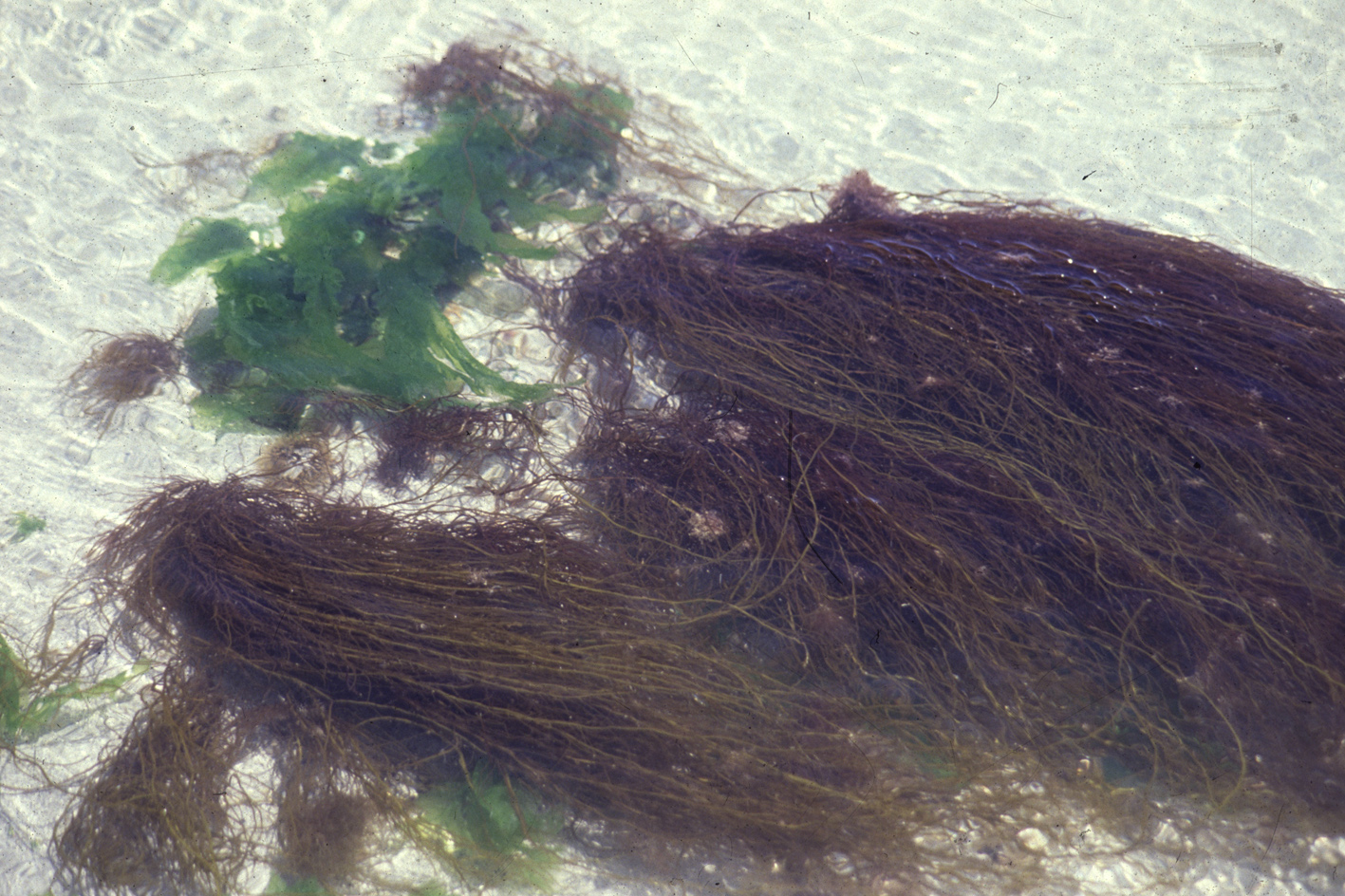
Gracilaria gracilis, Saldanha Bay.
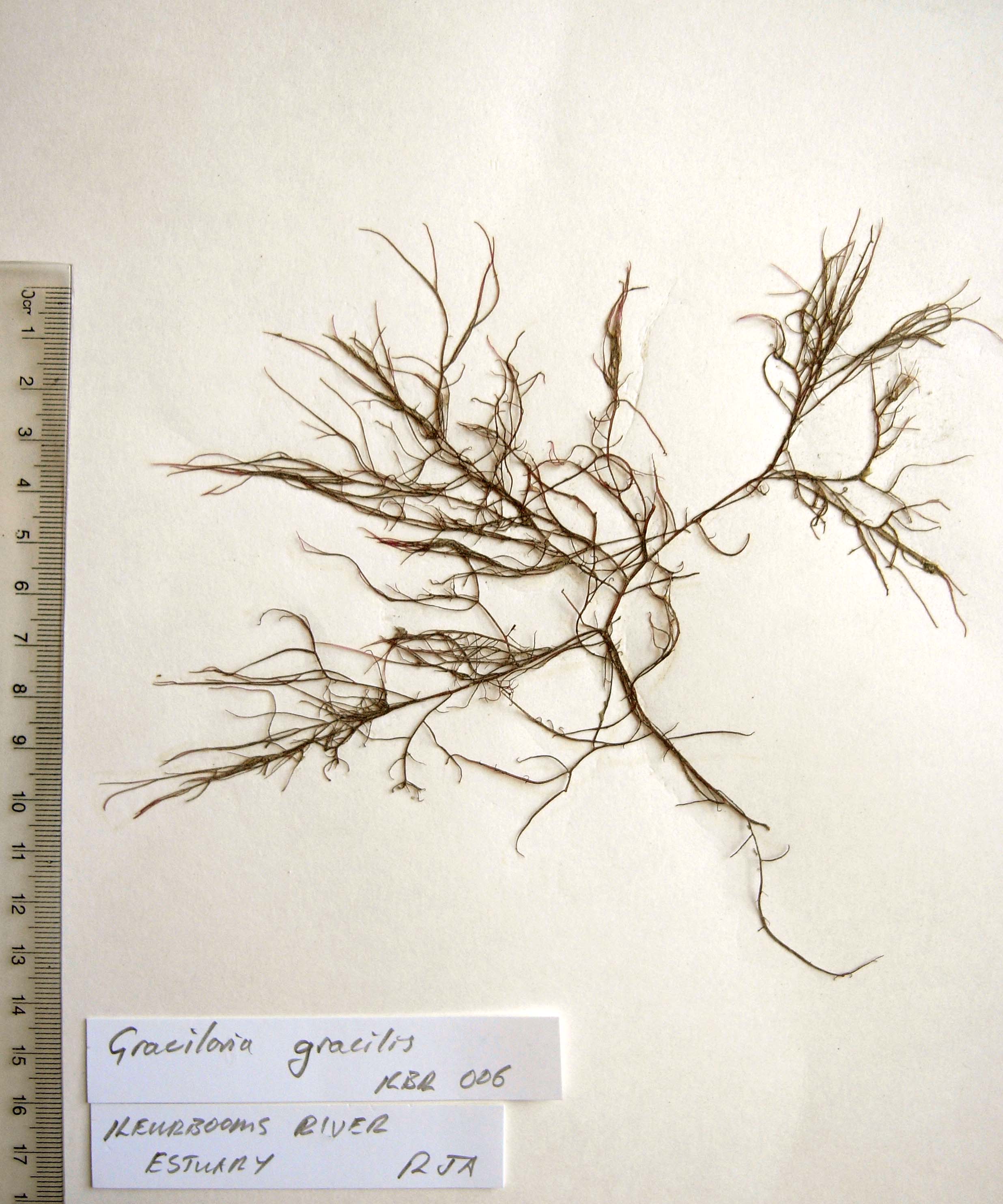
Gracilaria gracilis, Keurbooms Estuary (BOL).
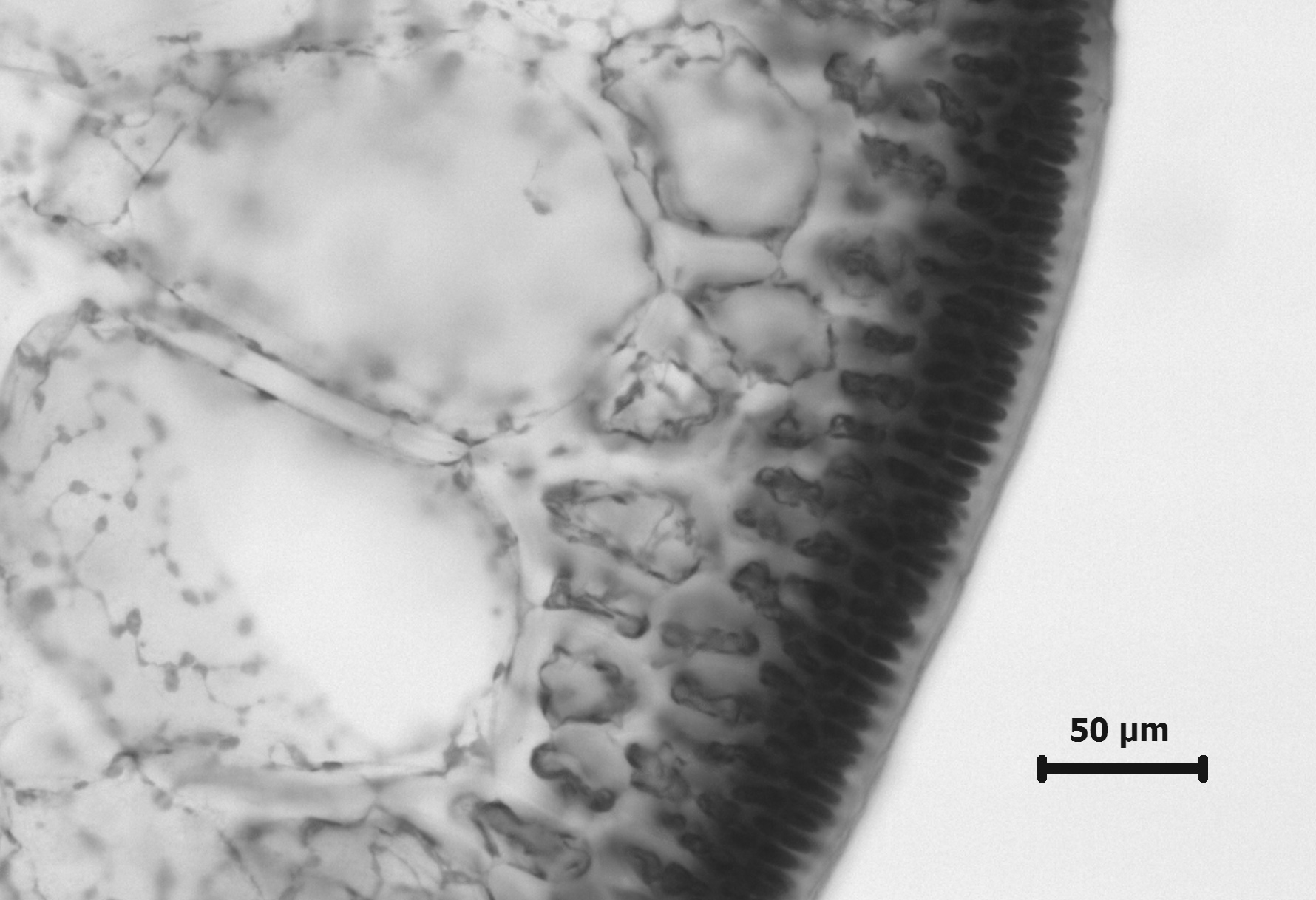
Gracilaria gracilis, cross section.
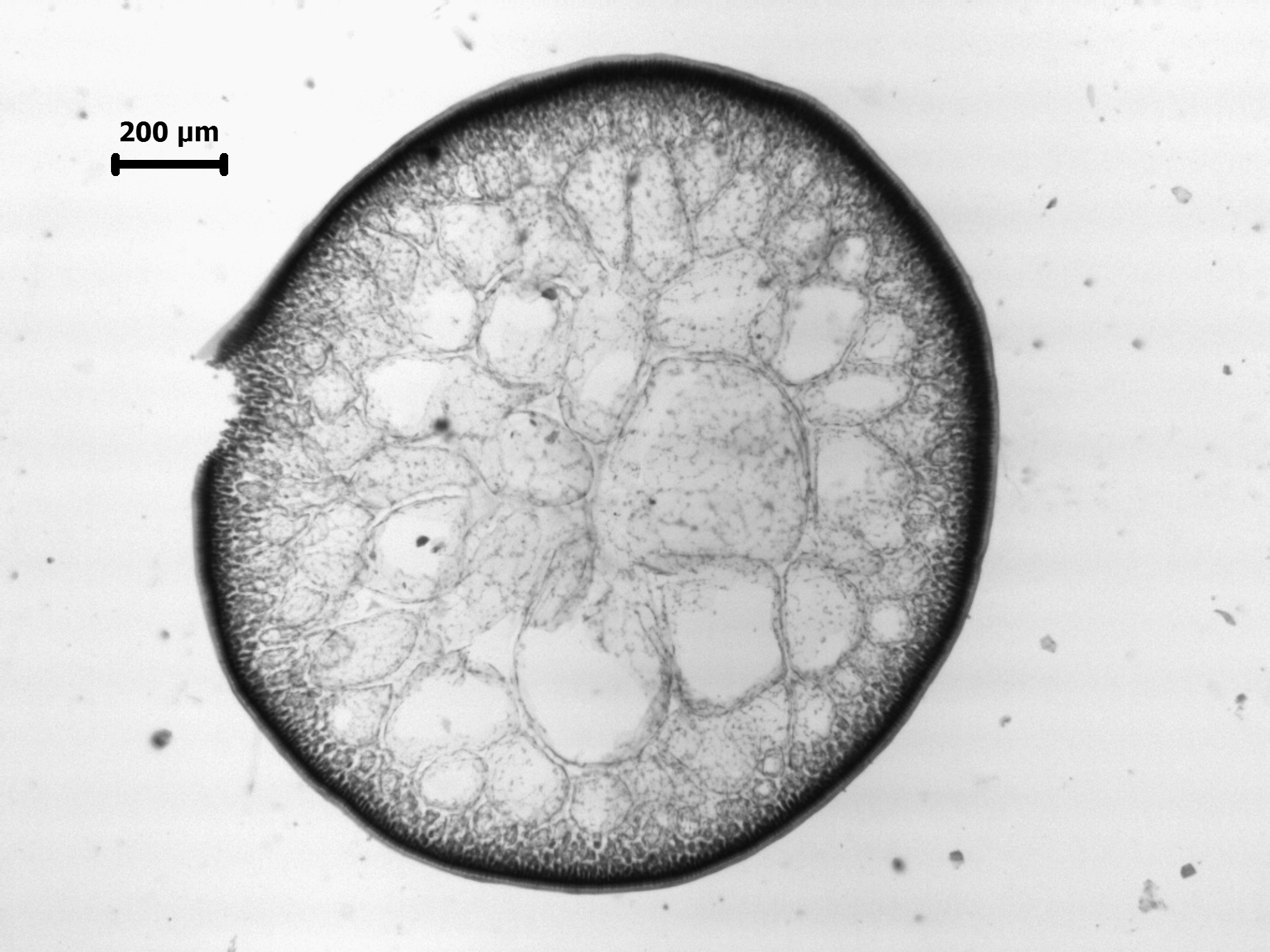
Gracilaria gracilis, cross section of outer medulla and cortex.
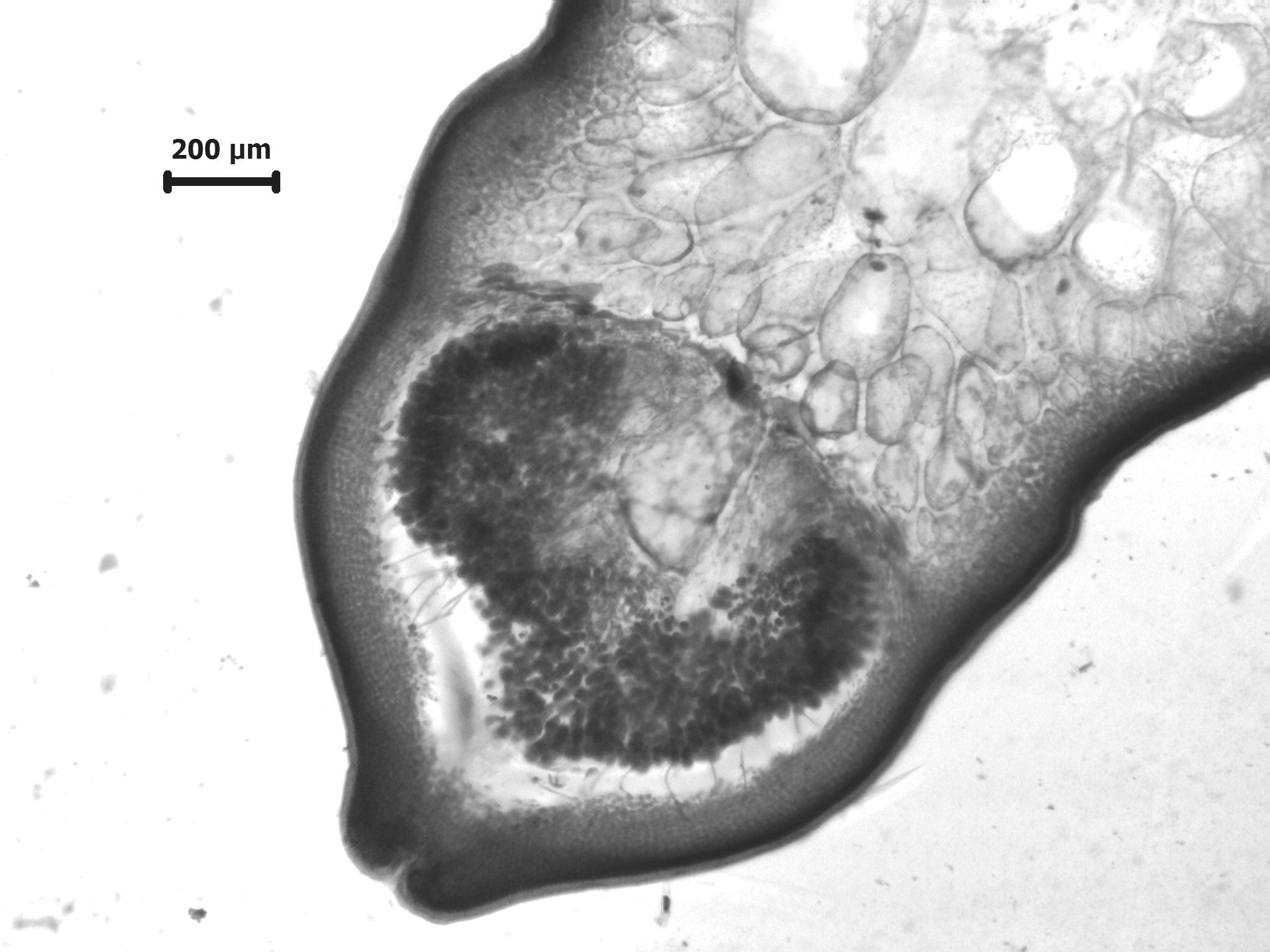
Gracilaria gracilis, cross section through cystocarp (nutritive filaments around carpospores mass barely visible).
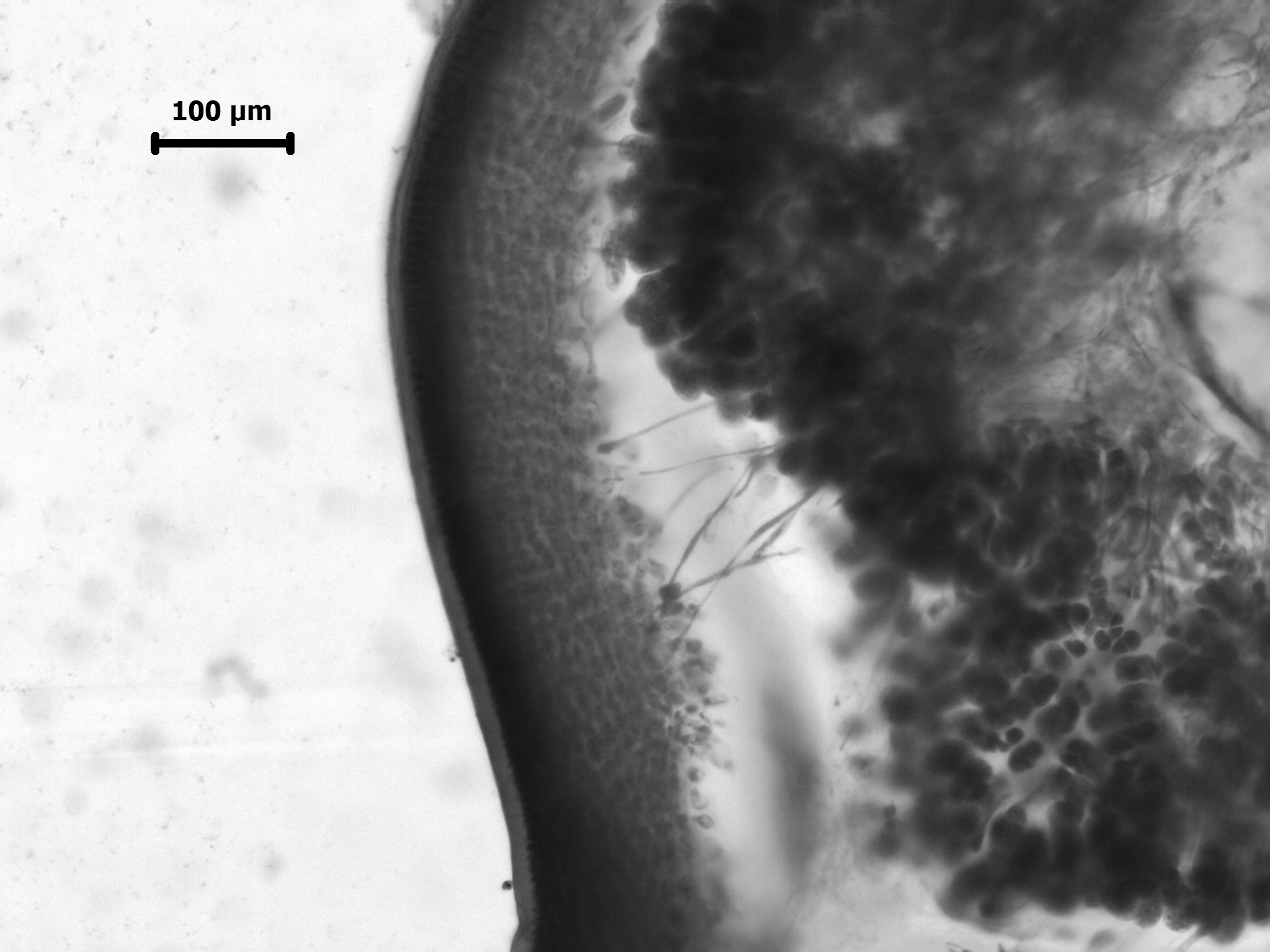
Gracilaria gracilis, cross section to show nutritive filaments between pericarp wall and gonimoblast.
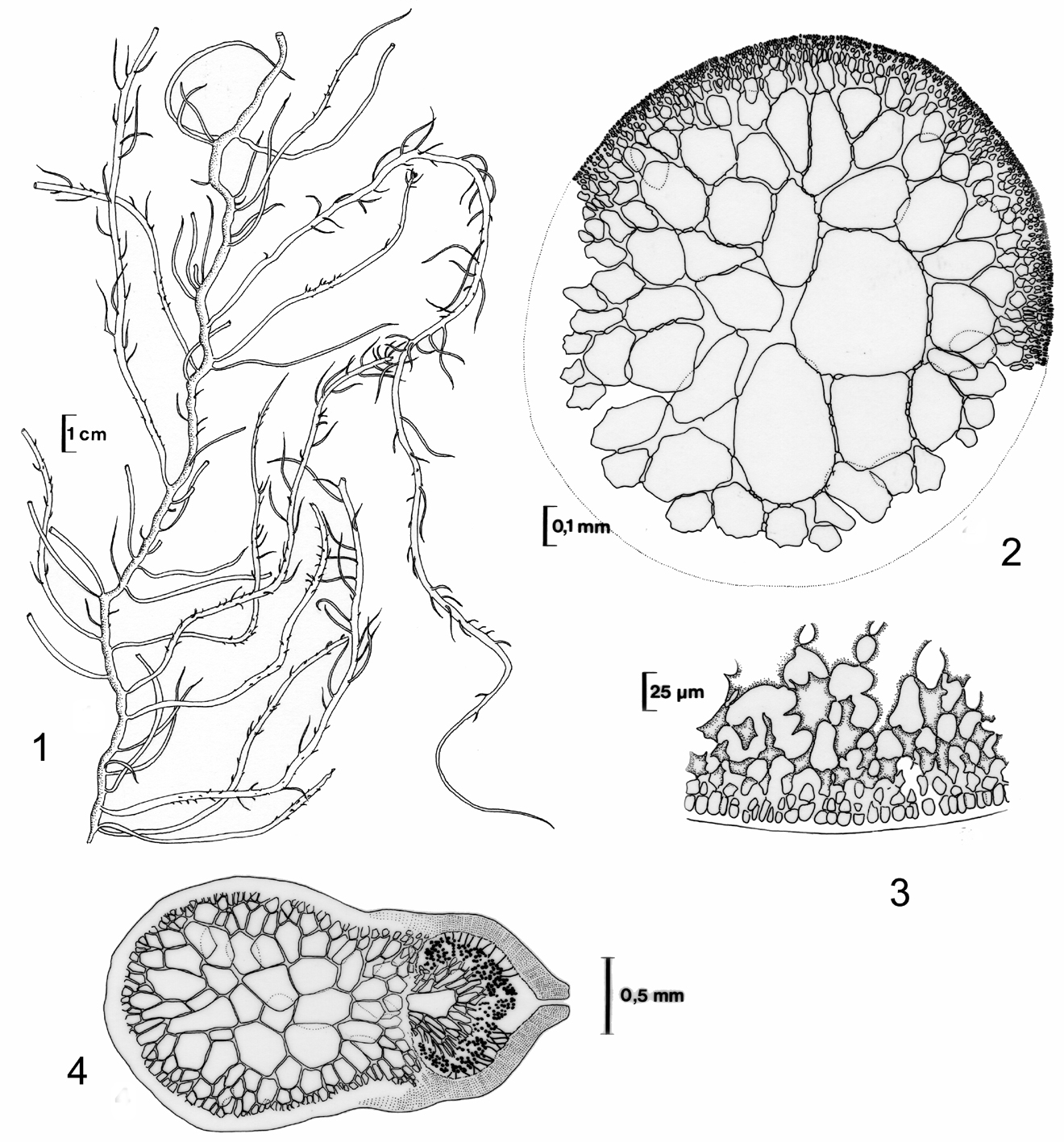
Gracilaria gracilis. 1. Habit. 2. Cross section of thick axis. 3. Cortex of narrow axis in cross section. 4. Cystocarp in section. Reproduced from Stegenga et al. (1997).
References Gracilaria gracilis
Iyer, R., De Clerck, O, Bolton J.J. and V.E. Coyne. 2004. Morphological amd taxonomic studies of Gracilaria and Gracilariopsis species (Gracilariales, Rhodophyta) from South Africa. South African Journal of Botany 70: 521-539.
Steentoft, M., Irvine, L.M. & Farnham, W.F. 1995. Two terete species of Gracilaria and Gracilariopsis (Gracilariales, Rhodophyta) in Britain. Phycologia 34: 113-127, 37 figs.
Stegenga, H., Bolton, J.J. and R. J. Anderson. 1997. Seaweeds of the South African west coast. Contributions from the Bolus Herbarium 18: 655 pp.
Cite this record as:
Anderson RJ, Stegenga H, Bolton JJ. 2016. Seaweeds of the South African South Coast.
World Wide Web electronic publication, University of Cape Town, http://southafrseaweeds.uct.ac.za; Accessed on 07 January 2026.